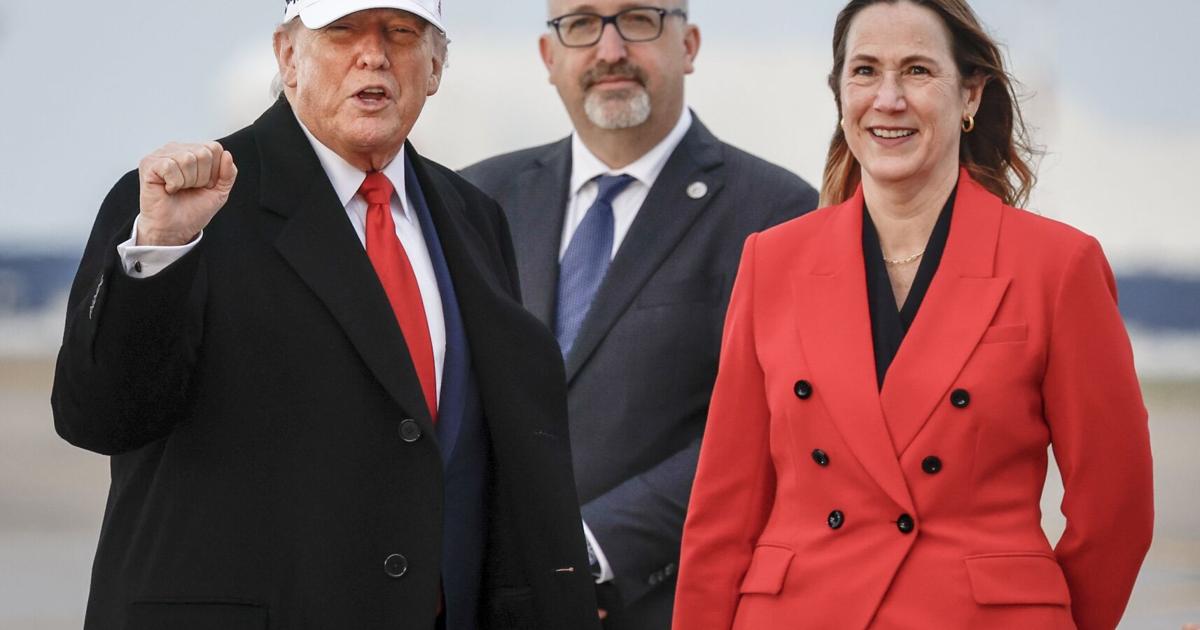OTTAWA—Despite Donald Trump’s decision to cut off formal trade talks with Canada, “the channels of communication are open,” including between Prime Minister Mark Carney and the U.S. president, said Canada’s Ambassador Kirsten Hillman.
Testifying at a senate committee, Hillman said that Carney “had some exchanges with President Trump in Asia,” on Wednesday at an APEC leaders’ dinner.
PMO officials declined Wednesday to detail whether those exchanges centred on the ruptured trade talks.
Hillman suggested they are not yet talking trade, however she told senators the relationship and negotiations can eventually get back on track.
“At the very top, those channels of communication remain open. I have had exchanges here with a number of my contacts in the administration. My team has also been having contacts. They’re not expressly on the trade negotiations, because people have been advised by their leader that … that is on pause right now, but we have a lot of different things that we can, we can talk about.”
Embassy personnel are talking to counterparts at the U.S. State Department, the Department of Homeland Security, the White House, the Energy Department and the Environment Department. “All of these are still happening, including right up to the most senior levels,” said Hillman.
“So this relationship is strong. It’s resilient. There’s so much that we’re doing together. The channels of communication are open, and we will get back to it. You know why we’ll get back to it? Because it’s in the interests of Americans and it’s in the interest of Canadians,” Hillman said.
Appearing via video conference from Washington, Hillman told the senate committee on foreign affairs and international trade, that before Trump suspended talks “important work” had been done to reach an agreement but “we weren’t there yet.”
Before Trump ordered a cessation of negotiations because of an Ontario anti-tariff advertising blitz last week, trade negotiators met almost daily to discuss steel, aluminum and energy at the Americans’ insistence, she said, but she clarified that Canadian negotiators raised autos and lumber tariffs at every meeting. Still, Canada agreed to narrow the initial discussions in the interests of getting some gains as fast as possible, she acknowledged.
The ambassador denied that meant that negotiators agreed to punt talks on autos and lumber to much further down the road, as industry leaders had feared.
Hillman said what “was lost in the way that this has been characterized or discussed publicly is that it is one to the exclusion of the other. And that’s not exactly what’s happening. It’s more a question of sequencing, at least in the U.S. eyes. And the U.S. is saying we would like to sequence it this way. Quite frankly, Canada wants to get as many points on the board as fast as we can, and we will, you know, we will do so by meeting them where we are.”
Challenged about why Canada has a higher overall tariff rate than Mexico (which one senator pegged at 4.7 per cent), Hillman said there isn’t much of a difference, saying that at the beginning of September, “the weighted average tariff applied to Canada was 5.6 per cent” after exemptions for CUSMA-compliant goods were considered.
The ambassador repeated Carney’s declaration that, “Canada stands ready to pick up and build on that work when the U.S. is ready to move forward again.”
Hillman said Trump seeks advice from a lot of quarters, including his allies in Congress and “there are people who have the president’s ear but that doesn’t mean that he will follow the advice of any single person,” she said. “He follows his own advice, he listens and he makes his decision on his own.”
“Every country is trying to find an approach that works for them,” she said.
Hillman acknowledged Canada-U.S. trade relations are “at a pivotal juncture” and that the path back won’t be “easy” but said the main thing “is to keep our eye on the ball” and seek an agreement that works for both countries — a prospect she suggested is still possible.
Canada is preparing for a review of the Canada-U.S.-Mexico Agreement on trade next year.
On top of specific sectoral tariffs, Trump levied overall 25 per cent “border emergency” tariffs on Canada, later bumped that to 35 per cent even after Canada dropped its digital services tax, and last week said he would impose an additional 10 per cent tariff on Canada due to the offending Ontario ad.
However Canadian officials have said there is no clarity on when or how that 10 per cent tariff will be applied. Trump in Asia this week, when asked when it would come into force, said “we’ll see.”
Hillman noted that the “vast majority” of Canadian exports to the U.S. remain, for now, exempted from the overall tariffs if they comply with the CUSMA agreement’s rules of origin.
Trade dominated discussions at two parliamentary committees Wednesday
In an interview last week with the Star, Jean Simard, head of the Aluminum Association of Canada, said that with metals prices now more realistically reflecting Trump’s tariffs, “in the coming weeks and months, the U S. manufacturing sector will feel the full impact of the tariff.”
Trump has slapped 50 per cent tariffs on foreign steel and aluminum imports, using a national security provision that acts as an exemption to the continental free trade agreement.
“Pain is on their side, time is on our side,” said Simard, a phrase he repeated Wednesday at the senate committee.
“We tell the government of Canada, take your time, because the American economy needs to feel the full impact of the tariffs, which are starting to materialize in the manufacturing cycles, which are acquiring the metal that costs 50 per cent more than it did during the summer. That is what will put pressure on the American administration in the coming weeks and months, and it will allow Canada to be better placed in the negotiations.”
The Canadian aluminum industry ships about 2.7 million tons of metal to the U.S. on a yearly basis or about 52,000 tons a week, about 80 per cent of what Canada makes, he said. The industry has diverted some product to Europe and Asia, however, with pre-tariff inventories in the U.S. depleted, metals prices have increased once more on the commodities market to reflect the tariffs and higher demand, Simard said.
Error! Sorry, there was an error processing your request.
There was a problem with the recaptcha. Please try again.
You may unsubscribe at any time. By signing up, you agree to our terms of use and privacy policy. This site is protected by reCAPTCHA and the Google privacy policy and terms of service apply.
Want more of the latest from us? Sign up for more at our newsletter page.



